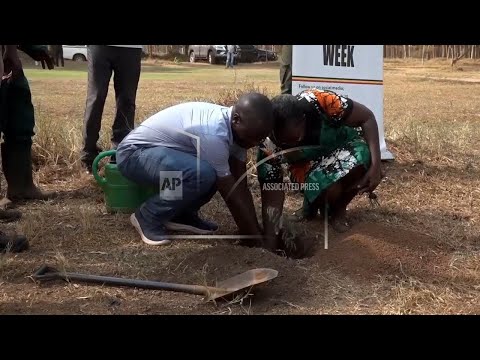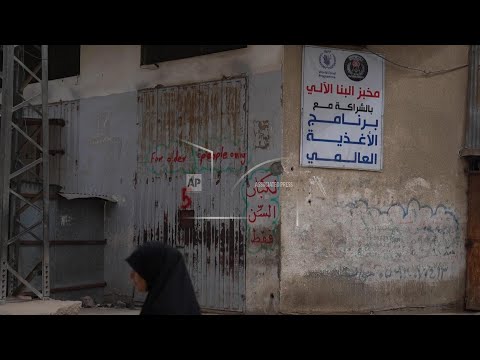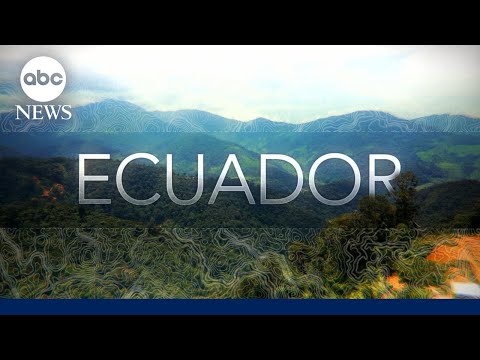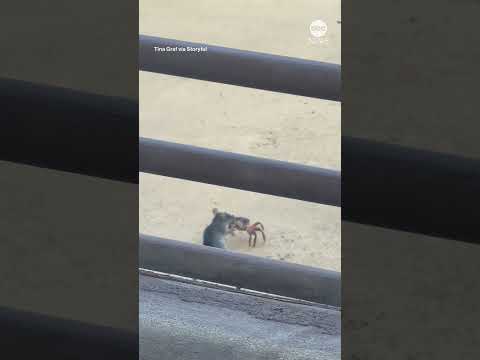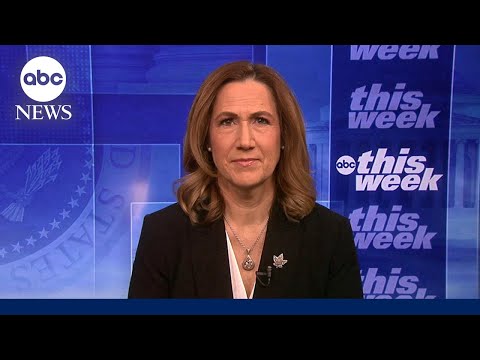(23 Apr 2025)
UGANDA WETLANDS
SOURCE: ASSOCIATED PRESS
RESTRICTIONS:
LENGTH: 7:23
ASSOCIATED PRESS
Kabango, Masindi Uganda – 6 March 2025
1. Drone shot of Kabango town, Masindi ++MUTE++
2. Drone shot of destroyed wetland ++MUTE++
3. Wide of sugarcane farmer Robert Atugonza on his burnt sugarcane farm
4. Close of burnt sugarcane stems
5. Mid of Robert Atugonza on his farm
6. Various of stunted banana trees
7. SOUNDBITE (English) Robert Atugonza, sugarcane farmer:
“We had very beautiful forest, very beautiful wetlands, but because of several pressures these areas were all degraded. By the time I grew up, at least I saw there was already cane. But the swamps were intact, the rivers were intact. We used to have rain wash us every day at 2, at such a time we should be having rain, and then there was to be more rain. You would find we would have very few months of no rain.”
8. Drone shot of Charles Magarch’s farm ++MUTE++
9. Various of Charles Magarch in his regenerated forest
10. SOUNDBITE (English) Charles Magarch, farmer:
“Because of desire to increase economically to get some money, I ended up cutting down the forests. So, for example, wildlife – there were chimpanzees, there were monkeys, calabash monkeys, all of them had to migrate because of that change. And now, when you look at that area where that forest was, there was a big catchment area of water. The water has dried out because of the forest going away.”
11. Various drone shots of regenerated swamp ++MUTE++
12. Various of water catchment area
13. Various of Robert Atugonza and local community members planting trees
14. Close of tree watering
15. SOUNDBITE (English) Robert Atugonza, sugarcane farmer:
“The communities participated in the rejuvenation of the wetland. What happened was that the rivers, the river is not a major issue for us, but the water points were drying. The papyrus mat had gotten finished, fire would cross from one part of the land to another part of the land. So, we were sensitised by the district, by a number of organisations, the need to have this forest cover back. But also, too, wildlife, like primates, that is monkeys, baboons, and chimpanzees were also coming to our homesteads because whatever trees they needed in the forests were not there.”
16. Wide of women walking to the well to fetch water
17. Drone shot of a newly built well ++MUTE++
18. Various of people collecting water from a well
19. SOUNDBITE (English) Francis Mugerwa, Public Relations Officer, Kinyara Sugar Works:
“We also realised that the community will not get the benefits it wants from the ecosystem if the wetlands are destroyed. So it was a meeting point between the company and the community to say conservation of these wetlands is for the good of us all. And that’s how we got a buy-in from the community and the company also staked in resources. We also got technical support from government and we got a lot of successes.”
20. Various of environmental activists walking
21. Various of a weather station at Kinyara factory ++PART MUTE++
22. SOUNDBITE (English) Joseph Odong, Senior Water Officer, Ministry of Water and Environment Uganda:
23. Drone of water treatment plant at Kinyara sugar factory ++MUTE++
24. Close of water treatment plant
25. Various of water being collected from a well
26. Women carrying water jerrycans on their heads
27. SOUNDBITE (English) Robert Atugonza, Local Sugarcane Farmer:
28. Drone shot of regenerated swamp ++MUTE++
STORYLINE:
LEADIN:
STORYLINE:
This is Uganda’s Western district of Masindi.
Find out more about AP Archive: http://www.aparchive.com/HowWeWork
Twitter: https://twitter.com/AP_Archive
Facebook: https://www.facebook.com/APArchives
Instagram: https://www.instagram.com/APNews/
You can license this story through AP Archive: http://www.aparchive.com/metadata/youtube/5de51b969d1549b2807e9648859d6fae
Author: AP Archive
Go to Source
News post in April 28, 2025, 12:05 pm.
Visit Our Sponsor’s:
News Post In – News

